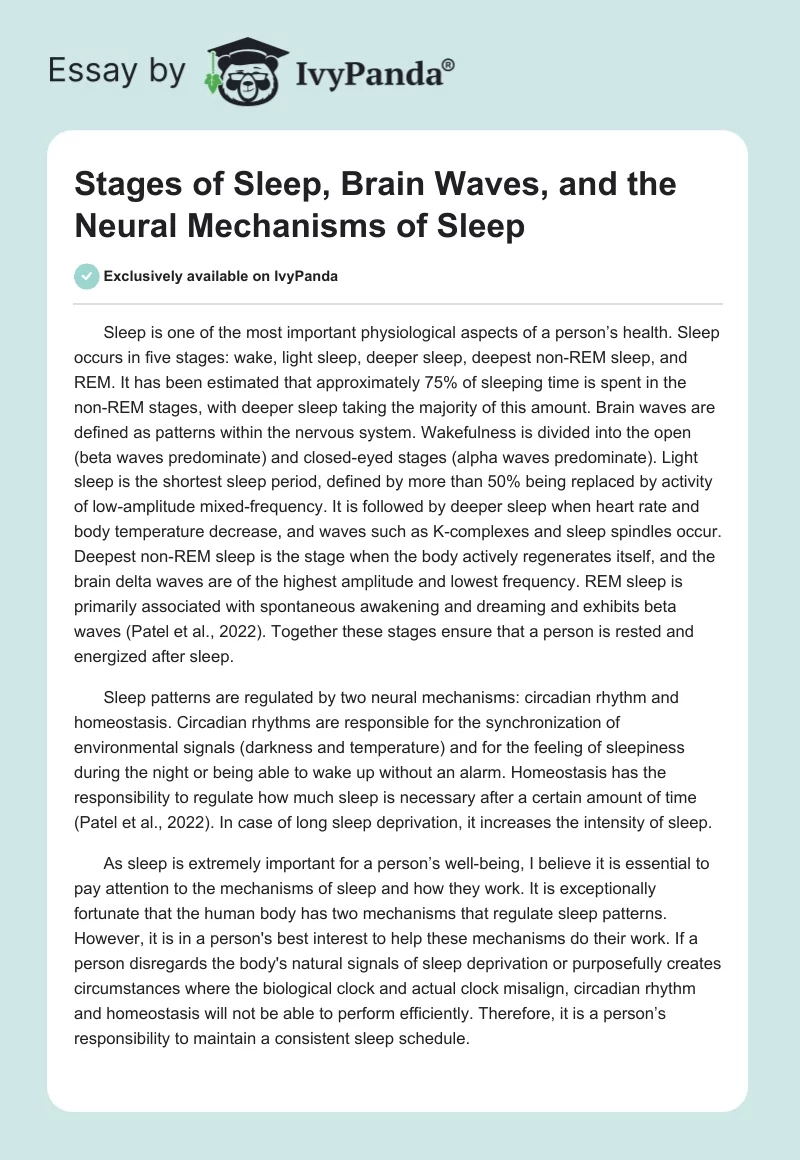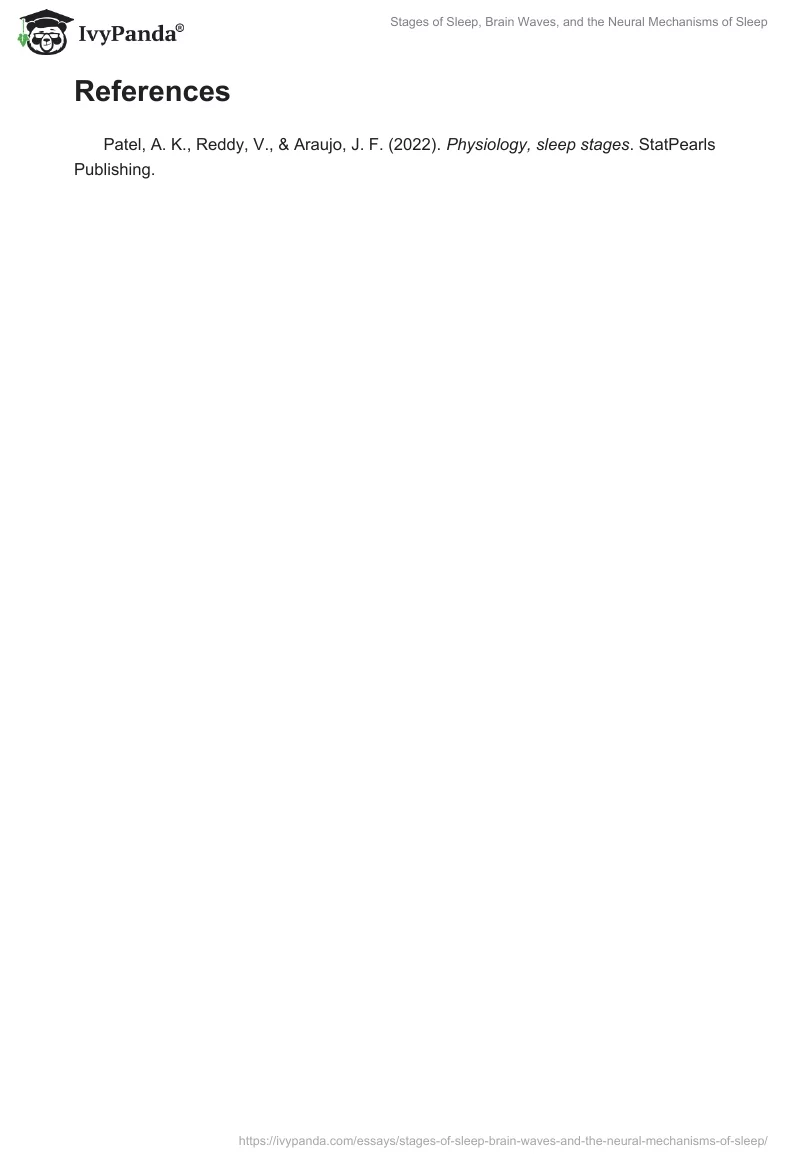Sleep is one of the most important physiological aspects of a person’s health. Sleep occurs in five stages: wake, light sleep, deeper sleep, deepest non-REM sleep, and REM. It has been estimated that approximately 75% of sleeping time is spent in the non-REM stages, with deeper sleep taking the majority of this amount. Brain waves are defined as patterns within the nervous system. Wakefulness is divided into the open (beta waves predominate) and closed-eyed stages (alpha waves predominate). Light sleep is the shortest sleep period, defined by more than 50% being replaced by activity of low-amplitude mixed-frequency. It is followed by deeper sleep when heart rate and body temperature decrease, and waves such as K-complexes and sleep spindles occur. Deepest non-REM sleep is the stage when the body actively regenerates itself, and the brain delta waves are of the highest amplitude and lowest frequency. REM sleep is primarily associated with spontaneous awakening and dreaming and exhibits beta waves (Patel et al., 2022). Together these stages ensure that a person is rested and energized after sleep.
Sleep patterns are regulated by two neural mechanisms: circadian rhythm and homeostasis. Circadian rhythms are responsible for the synchronization of environmental signals (darkness and temperature) and for the feeling of sleepiness during the night or being able to wake up without an alarm. Homeostasis has the responsibility to regulate how much sleep is necessary after a certain amount of time (Patel et al., 2022). In case of long sleep deprivation, it increases the intensity of sleep.
As sleep is extremely important for a person’s well-being, I believe it is essential to pay attention to the mechanisms of sleep and how they work. It is exceptionally fortunate that the human body has two mechanisms that regulate sleep patterns. However, it is in a person’s best interest to help these mechanisms do their work. If a person disregards the body’s natural signals of sleep deprivation or purposefully creates circumstances where the biological clock and actual clock misalign, circadian rhythm and homeostasis will not be able to perform efficiently. Therefore, it is a person’s responsibility to maintain a consistent sleep schedule.
References
Patel, A. K., Reddy, V., & Araujo, J. F. (2022). Physiology, sleep stages. StatPearls Publishing.


